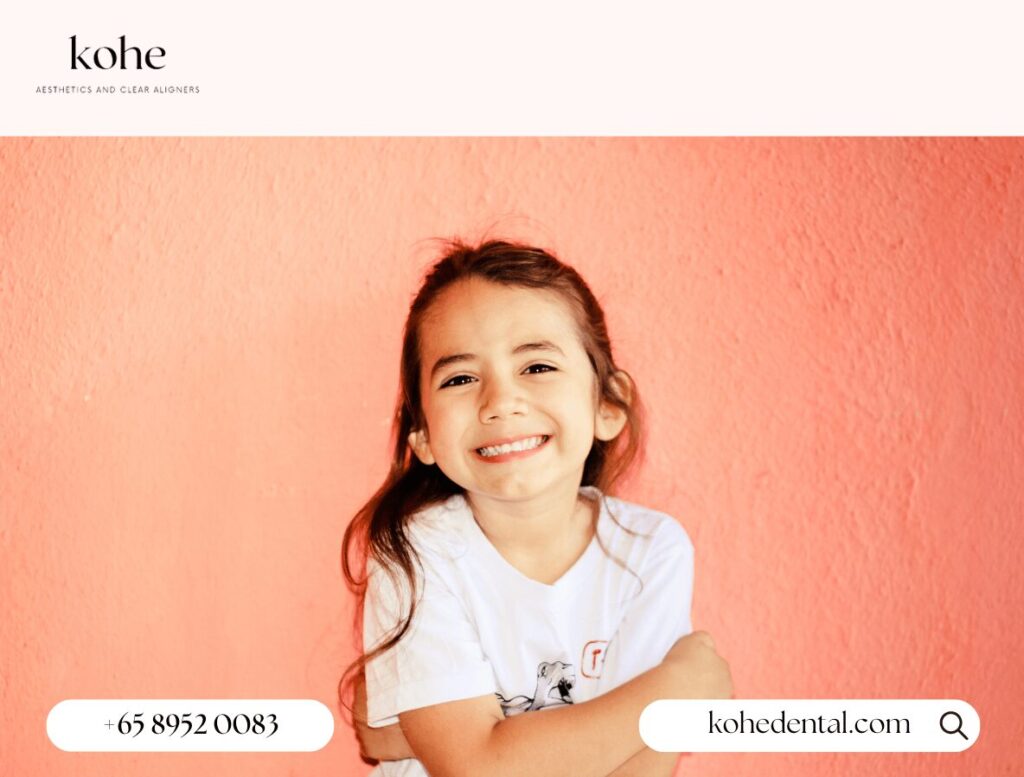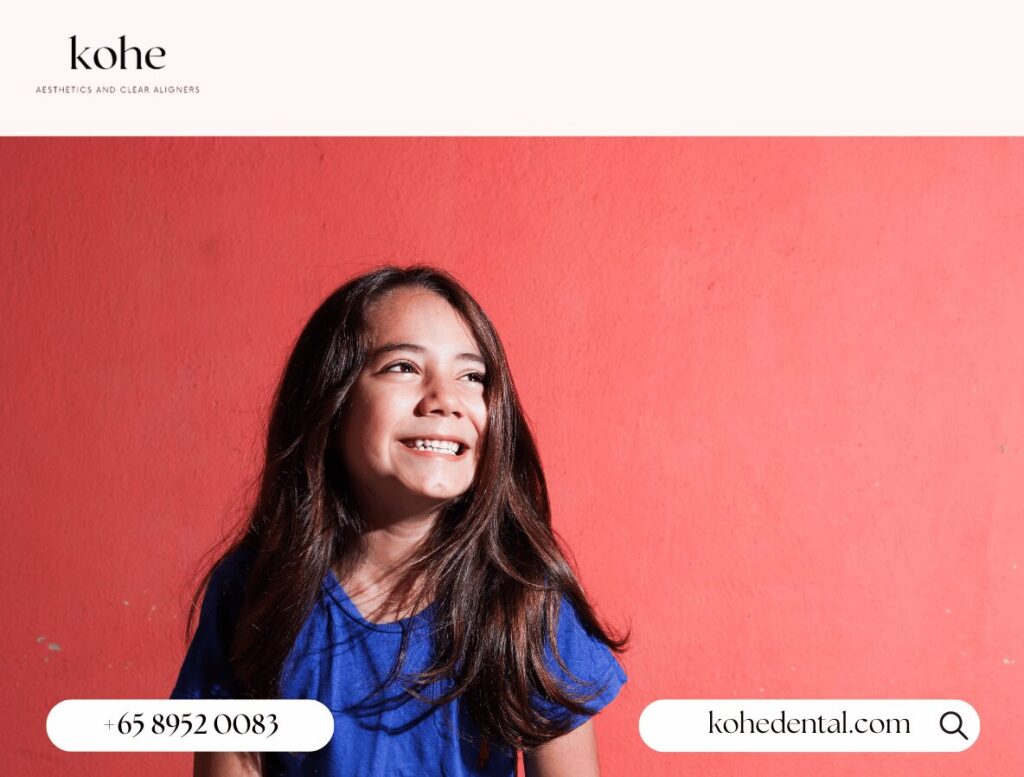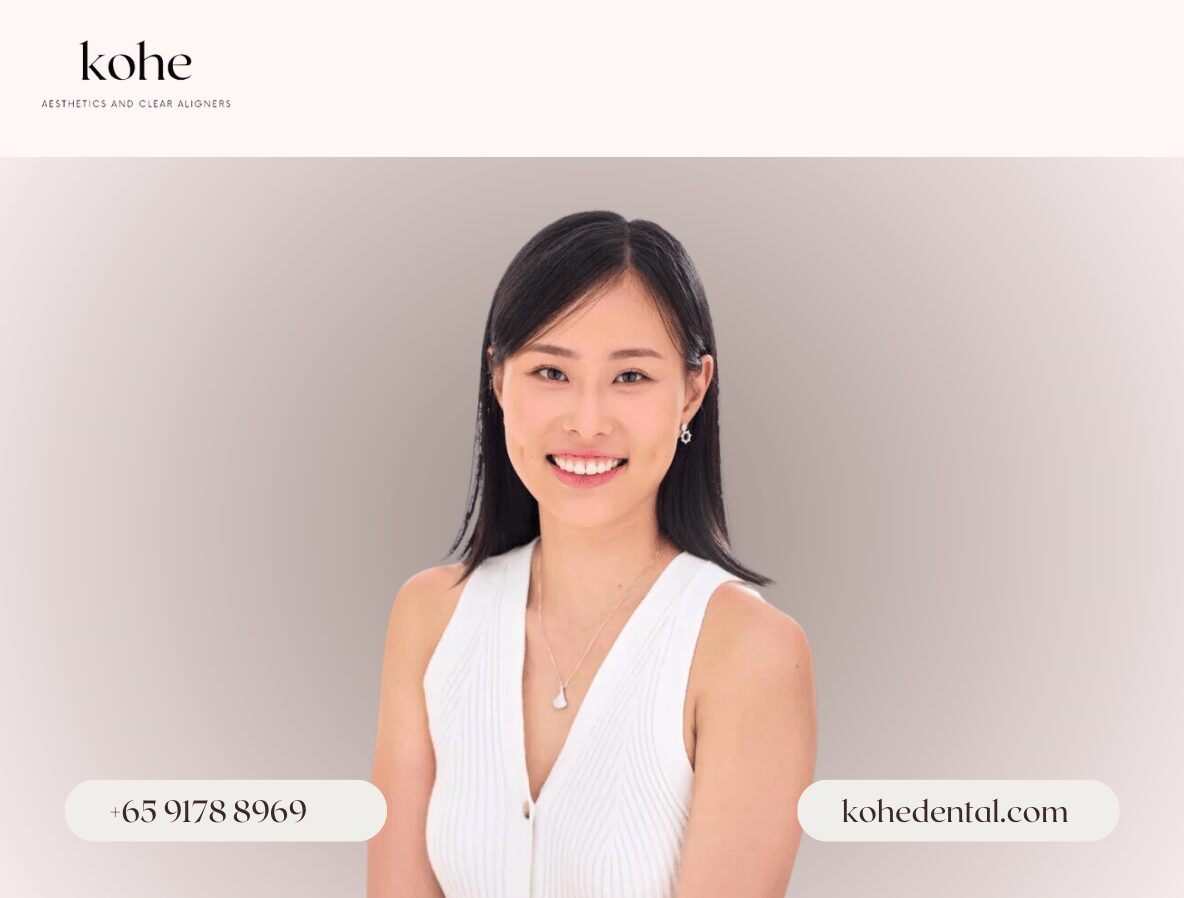You have recently visited a dentist or orthodontist to find out that your child might require palatal expanders. Your dentist or orthodontist might have told you that your child has a narrow upper jaw and might encounter more serious dental problems in the future without early intervention.
However, you are uncomfortable with having a metal orthodontic appliance in the upper jaw of your child. You might also have read reviews of traditional palatal expanders and the disadvantages of wearing one. It might also be that you feel that your child might not be comfortable being subject to daily open mouth screw turns for the palatal expander to work.
If you find yourself in the above scenario, want to know what to expect with Invisalign Palatal Expanders, or believe that your child might need palatal expanders and want to find out whether your child is suitable for it, this article has been written for you.
What is Invisalign Palatal Expander?
The Invisalign Palatal Expander is an orthodontic appliance for children that have not had fully developed palates. It is used to correct narrow upper jaws before further orthodontic treatment like braces or clear aligners are used.
The treatment is usually prescribed as a narrow upper jaw can contribute to dental crowding and future dental conditions.
Is My Child Suitable for Invisalign Palatal Expanders?

Your child is usually suitable for Invisalign Palatal Expanders if they have a narrow upper jaw, are under the age of 12 and have mixed dentition.
There are several contraindications that would immediately indicate that your child is not suitable for Invisalign Palatal Expanders. Here are some of them:
- Your child is past the growing phase (usually after the age of 12). In select cases, your child might be able to do it before 14.
- Your child has a clinical crown height of less than 4mm.
- Your child has a stainless steel crown on their primary second molar.
- Your child is missing one of their teeth and does not have 3 posterior teeth to hold the IPE.
What Conditions Are Suitable To Be Treated With The Invisalign Palatal Expander (IPE)?
There are many different conditions that are suitable to be treated with the IPE.
These are some of them:
- Anterior crossbite: When the lower tooth/teeth is in front of the upper tooth/teeth
- Posterior crossbite: When the molars of the upper teeth look more constricted on both sides
- Unilateral crossbite: When the molars of the upper teeth look more constricted on one side
- Anterior open bite (with posterior crossbite): When the molars of the upper teeth look more constricted on both sides, and there is a gap between the upper and lower front teeth when the child is biting together.
- Protrusion (of upper teeth)
- Dental crowding
Is Early Orthodontic Treatment Necessary For My Child?

According to the American Association of Orthodontists (AAO), all children should be screened at age 7 for orthodontic treatment. Children, from as young as 7 years old, up to teenagers at the age of 14, could benefit from early orthodontic treatment.
The purpose of this is to identify any early signs of problems that would impact the dental and even skeletal or facial growth of your child as they get older.
These problems could potentially affect the growth of their jaw, the eruption of their teeth, which would have a significant impact on their facial appearance. Some of these problems might also be more challenging to correct as the child gets older and the growth phase is completed.
The main advantage of correcting these problems early is that much more complicated orthodontic problems may potentially be avoided, which can save your child from more complicated future dental problems and improve their appearance as well.
How do I know if my child needs early orthodontic intervention?
You can start by noticing your child and his/her habits at home, before you bring him/her in to see a dentist/orthodontist!
These are some of the things you can look out for:
- Breathing predominantly through the mouth, instead of the nose
- Difficulty in biting off or chewing food
- Eating abnormally slowly or only on one side of the mouth
- Lisping or speech impediments
- Difficulty in pronouncing certain words/sounds eg “s” or “z” (it may sound like “th” instead)
- Habits like prolonged thumb sucking or tongue thrusting
- Messy or overlapping front teeth
- Very protrusive front teeth
- Front teeth not touching
- Extra or missing teeth
- When the jaw shifts to one side when the teeth bite together.
How long does the Invisalign Palatal Expander treatment take?
It depends on the amount of expansion your child requires. Generally it takes an average of 1-4 months. After the expansion is completed, your dentist or orthodontist will provide a holder set, to be changed every 2 weeks, and has to be worn for 3 months. This will help to stabilise the bone expansion that has been achieved with the IPE.
After completion of the IPE, patients are likely to have a gap between their front teeth because of the expansion achieved by the IPE. Your child would usually then undergo clear aligner treatment, such as Invisalign First or Angel Aligners KIDs, to align all their teeth for the permanent teeth to erupt into the correct position.
The entire course of treatment generally should not take longer than 18 months, provided the patient is compliant in wearing the IPE and clear aligners. Do visit your dentist or orthodontist for a personalised consultation and more information!
Can I skip Invisalign palatal expanders and go straight to Invisalign First?
Yes it is actually possible to skip Invisalign palatal expanders and go straight to Invisalign First.
However, the decision to use Invisalign Palatal Expanders before Invisalign First depends on the specific needs of your child. In many cases, these treatments serve different purposes and skipping the palatal expansion might not be advisable.
Invisalign Palatal Expanders are specifically designed to widen the upper jaw, creating more space for teeth and potentially improving breathing. This expansion is often a crucial first step in addressing underlying skeletal issues that cannot be corrected with tooth movement alone.
Invisalign First, on the other hand, is primarily focused on guiding the eruption of permanent teeth and addressing tooth alignment issues. While it can achieve some expansion, it is not designed for significant palatal widening.
If your child has a narrow upper jaw, starting with palatal expansion often creates a better foundation for subsequent orthodontic treatment. This can lead to more stable, long-term results and potentially reduce the complexity of future treatments.
Every child has a unique case.The best approach is to consult with your dentist or orthodontist. They can assess the specific needs of your child and recommend the most appropriate treatment sequence to achieve optimal results for the long-term oral health and smile of your child.
Your child is likely suitable for Invisalign Palatal Expanders if they have a narrow upper jaw, are below the age of 12 and have both milk and adult teeth.
The Invisalign Palatal Expander (IPE) offers a modern alternative to traditional metal expanders for children with narrow upper jaws. It is most suitable for children under 12 with mixed dentition, addressing conditions like crossbites, open bites, protrusion, and dental crowding.
Early orthodontic intervention, ideally starting at age 7, can prevent more complicated dental issues in the future and potentially improve facial appearance.Parents can look for signs like mouth breathing, difficulty chewing, speech issues, or visible teeth misalignment to determine if their child might need early orthodontic treatment.
The IPE treatment typically takes 1-4 months, followed by a 3-month stabilisation period. After expansion, children usually require clear aligner treatment to fully align their teeth.
While not suitable for all cases, the IPE provides a comfortable and less invasive option for many children needing palatal expansion. It is essential to consult with a dentist or orthodontist for a personalised treatment plan, as early intervention can lead to better outcomes and potentially simpler orthodontic treatments in the future.
